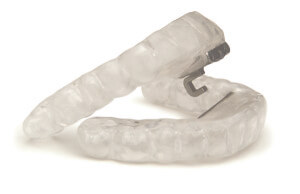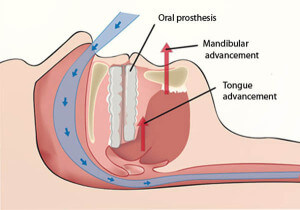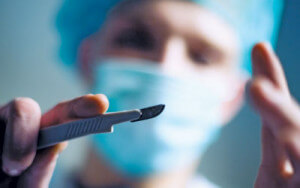Oral Appliance Therapy – The CPAP Alternative
 You have spent countless nights trying to become accustomed to wearing your CPAP mask and have grown tired and feel defeated. Frustration sets in and you are actually considering surgery as a solution to your sleep apnea. If this sounds familiar, you may want to take another look at your options prior to undergoing an often painful and risky surgical procedure that still do not guarantee results.
You have spent countless nights trying to become accustomed to wearing your CPAP mask and have grown tired and feel defeated. Frustration sets in and you are actually considering surgery as a solution to your sleep apnea. If this sounds familiar, you may want to take another look at your options prior to undergoing an often painful and risky surgical procedure that still do not guarantee results.
While surgical procedures such as the uvulopalatopharyngoplasty and soft palate implants (pillar procedure) are necessary in certain cases, doctors often view surgery as an aggressive approach to treating OSA. Before considering surgery, understand that there is one non-invasive solution that your doctor may not have mentioned. This solution does not require any surgery and has proven to be quite effective in treating mild to moderate sleep apnea. So what exactly are we talking about here? It’s called a dental appliance or oral appliance and it’s been in use for over three decades.
You may be wondering why you have never heard of this device. After all, it’s been available for several years and many people have found success with it. While there are several reasons why these are not as popular as CPAP machines, perhaps the most cited reason is that most doctors are not well-versed when it comes to oral appliance therapy. For years, they have been told that the CPAP is the “gold standard” when it comes to treating OSA and have accepted this as the only answer. While the CPAP along with weight loss and avoidance of sedatives is still the best and most effective treatment option, patient compliance plays a huge roll in whether or not treatment is successful.
Often times, a few simple modifications will make a huge difference when it comes to CPAP compliance. For example, adding a humidifier to your machine or trying out a different style of mask may be all that it takes to make your experience more comfortable.
But what about those who are not able to tolerate the CPAP? Those who have tried to work with their CPAP and simply can not tolerate it despite all efforts may want to speak with their doctor about oral appliance therapy.
Limitations
 This type of treatment does have its limitations.
This type of treatment does have its limitations.
First, it’s usually only prescribed to those with mild to moderate obstructive sleep apnea who are CPAP intolerant. Those with severe OSA or central sleep apnea are very unlikely to be prescribed one of these devices.
Another limitation is its effectiveness. While oral appliances are effective, they are still not quite as effective as the tried-and-true CPAP. This is of course why in most cases the CPAP is always the first tool that physicians recommend for the treatment of OSA.
As with any other piece of equipment, dental appliances will occasionally need to be adjusted or repaired. After several months of use, they will eventually wear out and need to be replaced.
Those who have issues such as Temporomandibular Joint Dysfunction (TMJ) may not be able to use a dental appliance
After taking the above limitations into consideration you may still find yourself interested in oral appliance therapy. If so, continue reading to learn more about this treatment option.
More on dental appliances for sleep apnea
 After many failed attempts with the CPAP, you have decided to further explore dental appliances. What exactly is a dental appliance, how are they used, and how much do they cost? These are a few questions that I hope to answer.
After many failed attempts with the CPAP, you have decided to further explore dental appliances. What exactly is a dental appliance, how are they used, and how much do they cost? These are a few questions that I hope to answer.
If you have ever seen an athletic mouthguard, you probably already have an idea of what a dental appliance for sleep apnea looks like.
While their appearance may be similar, they serve two entirely different purposes and should not be confused with each other.
The athletic mouthguard serves as a protective barrier between your teeth that prevents tooth injury while playing contact sports. In contrast, the dental appliance also fits between the teeth but functions as a device that holds the jaw slightly forward while asleep. It’s simply two trays – an upper and lower, that are bound together to form a mouthpiece. While there are over 80 different models to choose from, the Tap 3 Elite seems to be one of the more popular ones.
What makes this product unique and effective when it comes to treating OSA is the fact that the lower tray rests slightly in front of the upper which when worn, causes the jaw to maintain the forward position. The degree in which the advancement is set will vary from one person to another.
Why is it important to position the jaw forward? By doing so, you are pulling tight all of the muscles and tissue that surrounds the airway. This creates a clear opening for air to travel and prevents airway vibration and collapse. A restrictive airway is, of course, the cause of OSA.
Dental appliances are typically fitted and adjusted by your dentist. When choosing a dentist to create your custom appliance, be sure to find one who has extensive experience in dental sleep medicine. You will likely undergo a sleep study after receiving your new appliance to ensure that it’s working properly. Adjustments may be necessary to achieve a properly functioning device and a comfortable fit.
How much do they cost?
 One of the most commonly asked questions that I hear is “How much will an oral appliance cost?” or “Will my insurance cover one?”. The short answer is somewhere around $3,000 however, this amount will vary depending on which device you choose and how much your dentist charges to fit one.
One of the most commonly asked questions that I hear is “How much will an oral appliance cost?” or “Will my insurance cover one?”. The short answer is somewhere around $3,000 however, this amount will vary depending on which device you choose and how much your dentist charges to fit one.
As for insurance coverage, many insurance companies cover a large portion or in some cases all of the expense associated with acquiring an oral appliance if it’s deemed to be a medical necessity.
Unfortunately, not all insurance companies operate by the same rules. What makes it even more complicated is the fact that most doctors can only give you a rough estimate of the expense because even they are uncertain of how much your insurance is willing to cover until they begin working with your insurance company. In short, your health insurance will likely foot most of the bill but be prepared to pay out up to $1,000 or more if they decide not to.
When is surgery appropriate?
 Most doctors will tell you that invasive surgery should be last on your list when it comes to treating OSA. Depending on the type of surgery that you are considering, the recovery period could last for several days to several weeks or even months. Even after undergoing surgery, some patients still have issues with sleep apnea.
Most doctors will tell you that invasive surgery should be last on your list when it comes to treating OSA. Depending on the type of surgery that you are considering, the recovery period could last for several days to several weeks or even months. Even after undergoing surgery, some patients still have issues with sleep apnea.
For these reasons, the CPAP or oral appliance (along with weight loss if necessary) are the ideal treatment choice. There are however some instances where surgery is necessary such those who have very large tonsils or airway obstructions. It’s always recommended that you speak with your doctor concerning the best treatment options for your particular situation.
Share This Post: